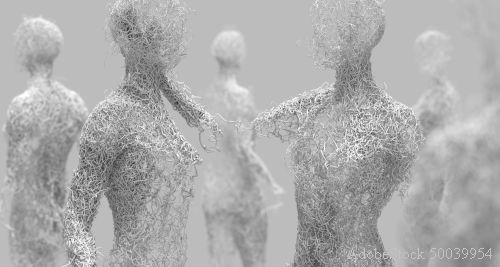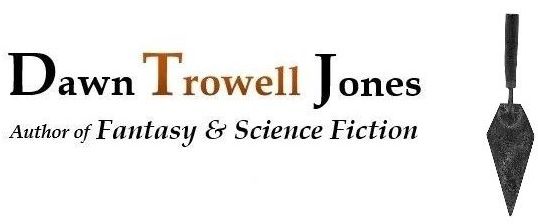 Did you know that I have a Halloween-themed short story that’s free to read? The process of submission takes so long – and this was in 2020 during the worst of the pandemic – that I decided to go ahead and share it with you, direct to consumer. Here’s the link to “La Gargouille” in case you missed it: https://dawntrowelljones.com/2020/10/gargouille/
Did you know that I have a Halloween-themed short story that’s free to read? The process of submission takes so long – and this was in 2020 during the worst of the pandemic – that I decided to go ahead and share it with you, direct to consumer. Here’s the link to “La Gargouille” in case you missed it: https://dawntrowelljones.com/2020/10/gargouille/
But what I really want to talk about today is this fascinating article by Ben Brubaker in Wired, originally published in Quanta Magazine. What a tantalizing title: “A Wheel Made of ‘Odd Matter’ Spontaneously Rolls Uphill.” The gist of the study as I understand it was to explore the problem of ambulatory motion in autonomous machines, aka robots. Apparently, the interactive mechanics of biological organisms when they move, such as when we walk, has been a challenging topic for scientists to study. A tough nut to crack.
 But when the components within an “odd wheel” interact in a semi-chaotic feedback dynamic, they settle into a natural oscillation, locked together (D&D’s “chaotic neutral” as opposed to “lawful neutral”?). The wheel reacts strongly when nudged. Due to an excess of built-up energy – because the “odd” aspect of the mechanism means it draws energy from its environment – the wiggling will cause the wheel to begin to move uphill.
But when the components within an “odd wheel” interact in a semi-chaotic feedback dynamic, they settle into a natural oscillation, locked together (D&D’s “chaotic neutral” as opposed to “lawful neutral”?). The wheel reacts strongly when nudged. Due to an excess of built-up energy – because the “odd” aspect of the mechanism means it draws energy from its environment – the wiggling will cause the wheel to begin to move uphill.
So what’s the big deal about this? Well, it’s the simplicity of the mechanism, with its six internal motors, plastic arms, and rubber band. There is no brain.
All biological organisms take energy from their environment – and they too have interlocking internal mechanisms that provide constant feedback to neighboring mechanisms, in a chaotic sort of feedback cycle. I shouldn’t say “loop” because from what I understand it doesn’t quite loop, even figuratively, but comes very close to looping when the tug-of-war oscillation’s increasing amplitude hits a limit. This limited cycle is called a “limit cycle” – limited due to the capacity of the motors and energy loss from friction. Everything alive might oscillate this way, even though organic motions appear smooth to us, or even stationary. “If the system is nudged away from this orbit, it’ll get pulled back in,” says the article’s author, Brubaker, concerning limit-cycle oscillations. In fact, the wheel itself created its own limit cycle as a collective whole: “the energy generated during each limit cycle allowed the wheel to push off against the ground and roll upward.”
 A close friend of mine who was once in the army tells me that standing still for long periods of time was one of the most exhausting tasks he remembers from boot camp. It was designed to test the recruits’ tolerance for pain. (As an interesting aside, he said women tended to last longer than the men.) If you think of the small mechanisms in the human body that must constantly check one another in order for a person to stand still, it’s not such a stretch to imagine the kind of oscillation in these entangled “odd” mechanisms. The article doesn’t go into how a brain might fit into the equation – which is the beauty of it, almost like a reversal of the second law of thermodynamics, and I couldn’t help thinking of my prior post “The 2nd Law of Thermodynamics: Higher Order for Greater Entropy? Life to Intelligent Life, & Beyond”. But I can imagine a push and pull between what the motor functions of the body can do and what the brain asks of its mini-machines, and how these oscillations might settle into a simple act of picking up a glass of water. If the “odd wheel” is a good model for low-level biological processes, we can guess there would be a repeated pattern of oscillations within ever-larger systems – ending with the body as a unit, which must feed and breathe, etc. A human body lives within a socio-ecological system – so, on it goes. Over time, every part must work together to take even one step without tipping over. An ordered chaos, for sure.
A close friend of mine who was once in the army tells me that standing still for long periods of time was one of the most exhausting tasks he remembers from boot camp. It was designed to test the recruits’ tolerance for pain. (As an interesting aside, he said women tended to last longer than the men.) If you think of the small mechanisms in the human body that must constantly check one another in order for a person to stand still, it’s not such a stretch to imagine the kind of oscillation in these entangled “odd” mechanisms. The article doesn’t go into how a brain might fit into the equation – which is the beauty of it, almost like a reversal of the second law of thermodynamics, and I couldn’t help thinking of my prior post “The 2nd Law of Thermodynamics: Higher Order for Greater Entropy? Life to Intelligent Life, & Beyond”. But I can imagine a push and pull between what the motor functions of the body can do and what the brain asks of its mini-machines, and how these oscillations might settle into a simple act of picking up a glass of water. If the “odd wheel” is a good model for low-level biological processes, we can guess there would be a repeated pattern of oscillations within ever-larger systems – ending with the body as a unit, which must feed and breathe, etc. A human body lives within a socio-ecological system – so, on it goes. Over time, every part must work together to take even one step without tipping over. An ordered chaos, for sure.
I am reminded – as someone who crafts stories – of a question an English professor once asked of my class (I may have mentioned this before): how do novels fit within chaos theory, or do they fit at all? I definitely believed stories fit, told in whatever form, including paintings, sculptures, and books. I still feel this way, and still think about it. Art represents a semi-chaos contained, a stylized reality. The stronger works, however they go about it, nod in the direction of chaos but pull back, checked by their own framework. This topic feels particularly relevant to me now as I continue the long process of querying my dark literary sci-fi blend of a novel during a pandemic. I went to Multiverse Con the weekend before last, a fairly new sci-fi and fantasy convention here in Atlanta with a focus on inclusion. I shared the first pages of I’m Your Goat with pros in the business – authors, a variety of editors, and the co-founder of a small publishing company. I received feedback from a strongly commercial-leaning crowd, true – which is why I wanted to attend the con. I learned about what sorts of adjustments I could make for broader appeal. But there was a novelist and Hollywood script doctor on my first-pages panel, and what he said truly warmed my heart.
The two others on the panel suggested I front-end information more than I had done. The script writer spoke up last. He said, “But if the writing is like this throughout, I would keep reading this chapter. In fact, I would read the entire book… from cover to cover.” So, a win! Yay! I thanked all three. An interesting tidbit – the script writer had been on the pitch panel earlier. If he remembered my practice pitch, he might have had an advantage because he would have already known what the story was about.
When I’m looking for an immersive mystery to read, I don’t want to be told about the mystery. I want to experience it – though the author will need to write in such a way that I enjoy the journey, so that the unfolding of the story propels me forward. Subtext for when I want subtext, at a fast pace for when I just want to know what happens next. I’m often both types when I read.
Now that you see where I’m coming from, I can point back to this quote in the article from Richard Feynman provided by Ricard Alert, a biophysicist at the Max Planck institute: “What I cannot create, I do not understand.” Alert went on to say, “You can just be lost in the complexity of human systems.” In sum, the “locomotion of the odd wheel” is an “emergent” quality of a semi-chaotic system. These concepts reminded me of my book.
In some novels more than others – and here is where prose style can make a difference – the meaning’s base may be loose with a multitude of spiking points of data – tone, setting, atmosphere, dramatic and internal irony, point and counterpoint portrayals, and unreliable narrators within a close point of view – all of these things that seemingly would point in many different directions, yet do not. They do not, because novels that thrive in this way will have identifiable threads that pull the reader pleasurably into a rich world of recognizable themes, with the heart and harmony of an orchestral composition. Oscillations within limits. The themes serve as shorthand for the universally human experience. The vibe and the data, and most of all our emotional connection with the characters, become a melody within an ordered chaos that we can come to know and love.
I’m re-reading David Mitchell’s debut Ghostwritten to keep my spirits high ahead of my next pitch in two weeks. If any of you know editors at Tor, put in a good word for me, will you?
